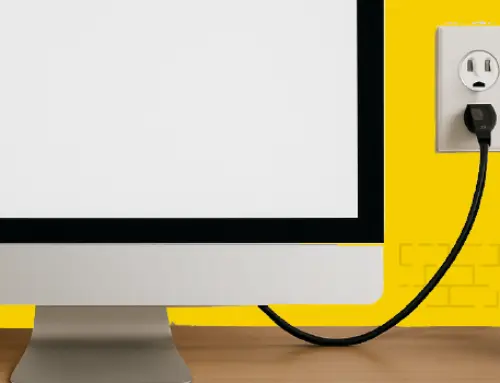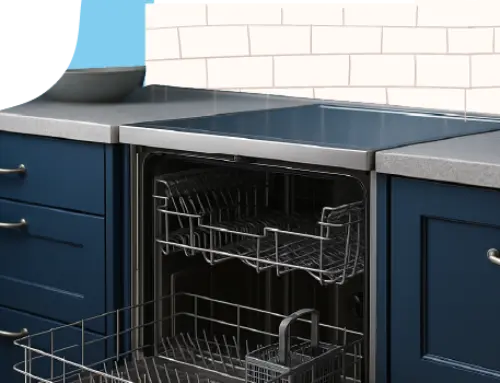How to Read an Electric Meter
by Tyler Castle
10.8 min read
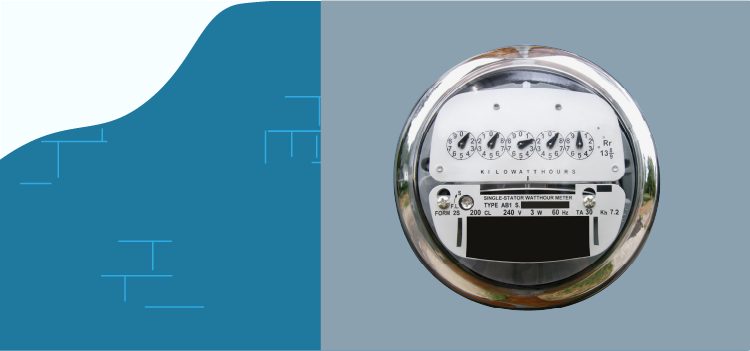
Electric meters are essential tools that track your energy consumption. Whether you're using traditional analog meters or modern smart meters, understanding how to read an electric meter can help you save on your energy bill and avoid billing surprises. If you're wondering how to read your electric meter, we've got you covered!
We'll walk you through the different types of electric meters, how they work, how to read them, and the significance of meter readings in managing energy costs. Let's get started.
How to read an electric meter
Most homes are equipped with analog meters typically with 4-5 dials. To correctly read an electric meter, first, write down the first numbers that you see in order, from left to right on your electric meter.
When looking at your electric meter, its dials measure the number of kilowatt-hours (kWh) you use in 1s, 10s, 100s, 1,000s, and 10,000s. The "1s" is the furthest number to the right.
Each dial on the meter is numbered from 0 to 9 and has a pointer – like the hand on a clock – that turns either clockwise or counterclockwise. The pointers advance only when electricity is being used.
To read your electric meter, keep in mind that if the pointer is between two numbers, record the lower number. If a pointer is directly on a number, check the next dial to the right. If that pointer has passed zero, record the number the pointer is on. If it hasn't passed zero, record the lower number.
Here's an example of how to read an electric meter:
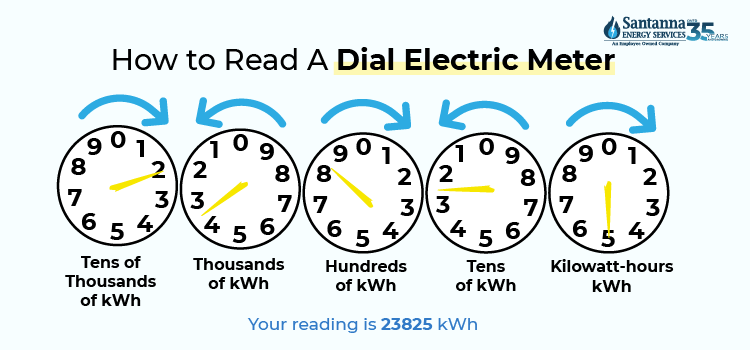
In this example, the pointer on the first dial is between 2 and 3. We record the lower number, which is 2. The pointer on the second dial is between 3 and 4. Again, we record the lower number, which is 3. On the third dial, the pointer is between 8 and 9, so we record 8. On the fourth dial, the pointer is between 2 and 3, so we record 2. Finally, the pointer is directly on 5, so we record 5.
For this example, the reading from left to right reads 23,825 kWh.
Figuring out your monthly electrical energy consumption from your meter
To figure the number of kilowatt-hours you used during the month, subtract the last month's reading on your most recent electricity bill from the reading you've recorded following the steps above. It's best to record your meter reading as close to the end of the month as you can so you can get a full picture of your energy consumption.
If you don't have your meter reading from last month, you can still estimate your usage by looking at your most recent electric bill. The bill should indicate the amount of energy in kWh you used last month.
Subtract this prior reading on your bill from your current meter reading. The result is the number of kilowatt-hours you've used since the last recorded reading. This will give you an estimated electrical energy consumption from your meter.
Types of electricity meters
When monitoring energy consumption, understanding the different types of electricity meters is essential. There are several varieties, each designed to meet specific needs and technological advancements. Here are some of the most common types of electric meters:
Analog (Dial Meters)
These are traditional meters that use a series of small dials to display electricity usage. Each dial rotates in the opposite direction from the one next to it, which can make reading them tricky. Analog meters are gradually being replaced by digital and smart meters, but are still common in older homes.
Digital meters
More modern than analog meters, digital meters display electricity usage in clear, numerical format (usually in kilowatt-hours or kWh). These are easier to read than dial meters, as they do not require interpretation of dials, and often provide more accurate readings. To read a digital electric meter, simply read the number as shown on the screen from left to right.
Smart meters
The latest in meter technology, smart meters automatically send real-time usage data to the utility company, eliminating the need for manual readings. They provide detailed energy consumption data, often accessible via a mobile app or website. Some smart meters allow users to monitor energy use in real-time and can help with energy-saving efforts.
What does a smart meter look like?
Smart meters feature a digital screen that shows electricity usage in kilowatt-hours (kWh). Unlike traditional analog meters with spinning dials, smart meters do not have any moving mechanical parts. The readings are shown digitally. 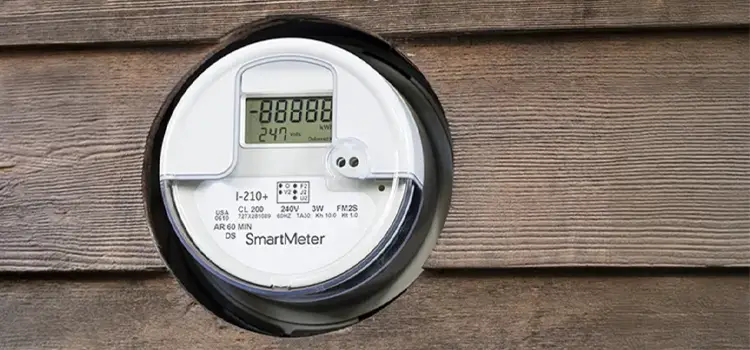
Automated meter reading (AMR)
Automated Meter Reading (AMR) refers to the technology that automatically collects data from electric, gas, or water meters and sends it directly to the utility company. This eliminates the need for manual meter readings, ensuring accuracy and reducing labor costs.
The technology uses radio frequency (RF), powerline communication, or even cellular networks to transmit data from the customer's meter to the utility's system.
How does AMR work?
AMR meters come with built-in sensors that capture energy consumption data at regular intervals. The collected information is then transmitted remotely to the utility company's billing system.
The readings can occur in real time or at scheduled intervals, depending on the meter type and the utility provider's system. Remote-controlled AMR systems eliminate the need for manual meter readings altogether.
Benefits of AMR
Accuracy: AMR greatly reduces errors that are common with manual readings. Since data is transmitted electronically, there's minimal risk of human error, ensuring accurate billing.
Cost-Effectiveness: With automated readings, utility companies can save on labor costs, as they no longer need personnel to physically visit and record readings.
Convenience for Consumers: AMR meters do not require customers to be home during readings, which adds convenience for people with busy schedules.
Real-Time Tracking: While AMR may not always provide real-time data, it can deliver frequent updates that help customers track their consumption more effectively than traditional methods.
Where is the meter number on my electricity meter?
The meter number on your electricity meter is usually printed on the front of the meter, often near the manufacturer's logo or next to the digital display. This number is essential for identifying your meter for utility reporting, troubleshooting, or when requesting service from your energy provider.
If you suspect a problem with your meter (e.g., it's damaged, inaccurate, or not working), you'll need to contact your utility company directly.
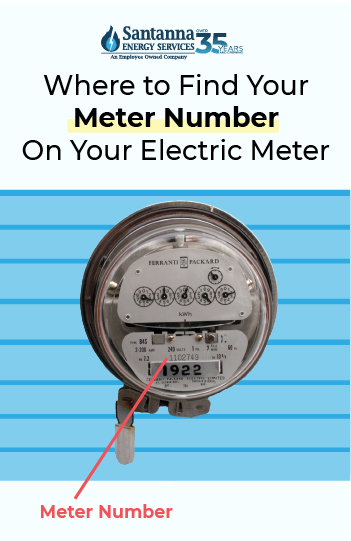
How often should you read your electric meter?
It's ideal to read your electric meter monthly. This frequency allows you to track energy usage regularly and ensures that your bill aligns closely with actual consumption. Monthly readings can also help identify unexpected increases in electricity use, allowing for timely adjustments to reduce consumption.
If you are on a self-read plan, your utility company might provide specific guidelines on how often you need to submit readings—typically once a month, or at least quarterly. Make sure to submit your readings on time to avoid estimated billing, which can lead to discrepancies.
If you're enrolled in an Unlimited Energy Plan, like the one offered by Santanna Energy Services, meter readings still take place regularly, but the stress of monitoring usage is reduced. With an Unlimited Energy plan, you can enjoy a consistent supply charge without worrying about fluctuations in your monthly consumption.* This can provide peace of mind, knowing that your usage won't impact the monthly supply charge of your bill.
Why it's important to read your electric meter
Avoid Billing Errors: Reading your meter regularly helps ensure that you're billed only for the energy you've actually used, rather than relying on estimated bills, which can sometimes be inaccurate.
Track Usage: Regular readings give you insights into your energy consumption patterns. This information can highlight periods of high energy use, allowing you to make changes to your habits or identify energy-intensive appliances.
Cost-Saving Tips: By monitoring your consumption, you can spot potential inefficiencies in your home and reduce unnecessary energy use, leading to lower bills.
How to track energy usage over time
To track your energy usage over time, you can use various tools like apps or spreadsheets to log your meter readings and track energy use over time.
Comparing monthly or seasonal readings can help you identify trends, such as increased usage during the winter or summer months when heating or cooling systems are in use. Knowing these trends in your energy usage can help you identify when to implement energy-saving habits into periods where you know you'll use a lot of energy.
Differences between utility meter readings and self-read meters
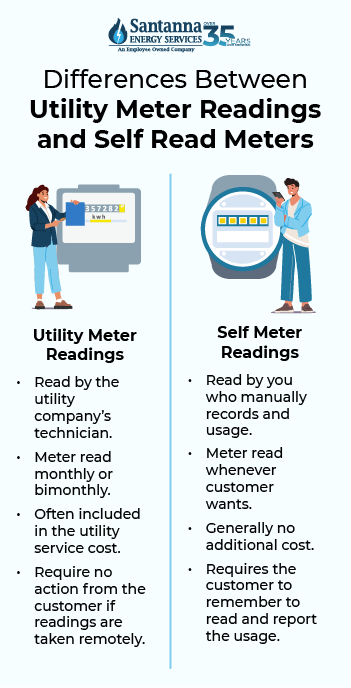
Utility-Read Meters
Utility meter readings are the default option for most households, where a utility representative comes to read your meter at regular intervals, typically monthly or bi-monthly. While convenient, you might not have access to real-time usage data with this method.
Self-Read Meters
For self-read meters, homeowners are responsible for reading their own meters and submitting the readings to the utility company. This method gives more control and helps you understand your energy consumption better. This is particularly useful for those who want to actively track usage and optimize energy consumption for savings.
How to read your meter in case of a power outage
For smart meters, many are designed to store data during power outages. Even if power goes out, the meter often retains energy usage data, making it possible to check readings once electricity is restored. You can typically see when the outage occurred and how long it lasted.
If you have an analog meter or a non-digital meter, these do not store data during an outage. You'll need to check the reading after the power is restored. Take note of the reading before the outage and compare it with the post-restoration reading to ensure accurate tracking. Ensure you're reading the dials or digital display properly. Each dial measures different units, so understanding how to interpret these is critical.
For all types of meters, once the power is back on, verify that the meter reading starts up again and is tracking correctly. You can report any discrepancies to your utility provider. Regular meter readings are crucial, especially after an outage, to ensure you're only billed for what you've used.
After a power outage, ensuring the meter is working correctly helps avoid incorrect billing. Some meters might malfunction or reset due to the outage, which could result in inaccurate readings.
Signs Your Meter is Reading Incorrectly
- If your electricity bill suddenly spikes or drops significantly without any change in your usage habits, it could indicate a meter reading error.
- If your meter readings do not follow a typical usage pattern for your household.
- When you manually check the reading on your meter, it should be close to the reading on your bill. If the numbers are far off, the bill may be based on an incorrect reading.
- If your bill shows multiple readings taken on the same day, it may indicate an error in recording or data entry.
- If your meter was recently replaced or upgraded (e.g., to a smart meter), incorrect readings could occur due to installation or data configuration errors.
Who is responsible for replacing your electric meter box?
It is the homeowner's responsibility to replace your electric meter box. On average, the cost of replacing an outdoor electrical box falls around $375. This cost will vary based on what meter type you choose. The meter box (also called a meter enclosure) is often part of the property's infrastructure, placing the responsibility on the property owner to maintain and replace it if necessary.
Understanding how to read an electric meter gives you control over your energy usage, reduces the chance of billing errors, and can help you save money in the long run. Whether you have an analog or smart meter, taking a few minutes to learn how to read it accurately can make a big difference in managing your energy expenses.
At Santanna, we are committed to supporting homeowners like you in making informed decisions about energy consumption. We offer a range of energy solutions tailored to your needs and lifestyle.
There's peace of mind in knowing you'll pay the same monthly supply cost amount for your electricity or natural gas supply without any uncertainty — no matter what. Santanna's Unlimited Energy option protects your bills from fluctuating supply charges no matter the changes in seasons.* For over 35 years, Santanna has served customers in Illinois, Indiana, Pennsylvania, Michigan, and Ohio. Our mission is to provide innovative and cost-effective energy solutions that will help our customers achieve their energy goals.
* Restrictions apply. Enrollment based upon program eligibility. Customers using more than 125% of normal monthly usage as determined by Santanna may be required to switch plans.
Tyler is an experienced energy professional, having worked for Santanna Energy Services, for the past four years. He is passionate about renewable energy and believes that diversifying the energy grid is the key to a sustainable future. Tyler is dedicated to supplying consumers with the best possible energy solutions and works diligently to make sure that Santanna can deliver the highest quality service.



